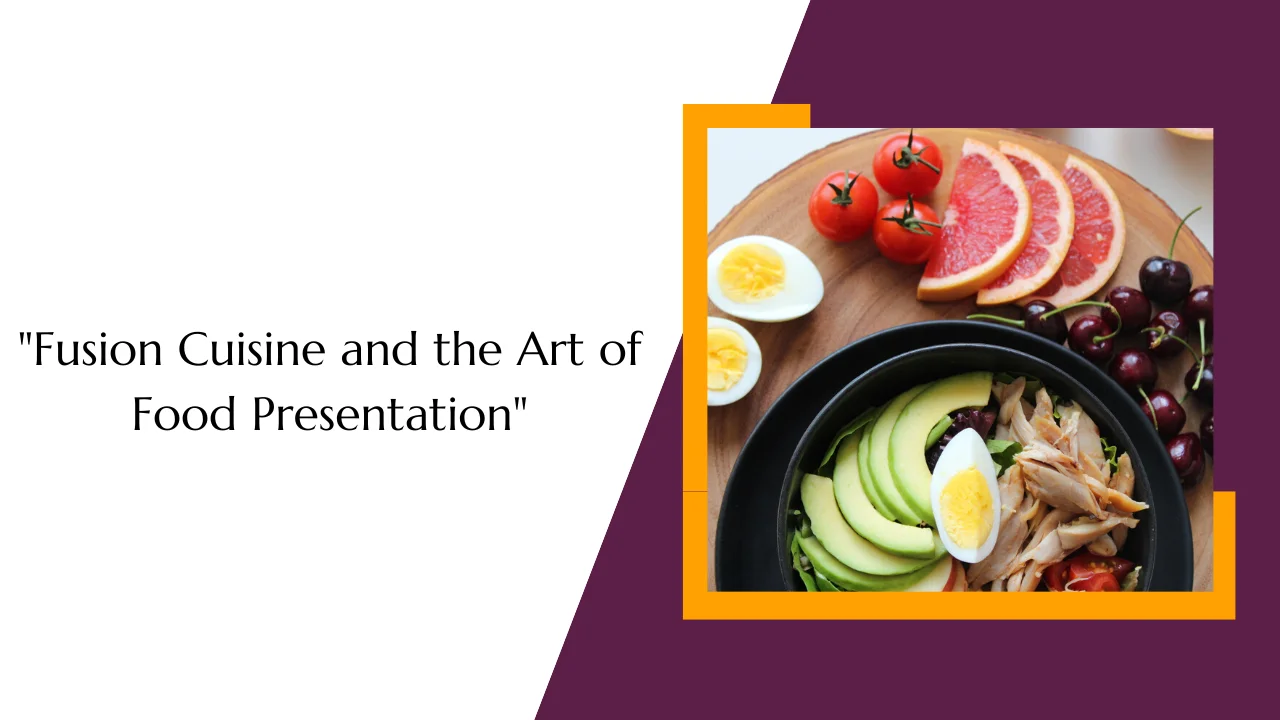In the world of gastronomy, fusion cuisine has revolutionized the culinary landscape by blending elements from diverse culinary traditions to create innovative dishes. While the creativity of fusion cuisine is often celebrated for its unique flavor combinations and ingredient pairings, the art of food presentation plays a crucial role in its success. This article explores how fusion cuisine intersects with the art of food presentation, highlighting the importance of visual aesthetics, plating techniques, and the impact on the dining experience.
The Intersection of Fusion Cuisine and Presentation
Fusion cuisine, characterized by its inventive merging of culinary traditions, relies heavily on the art of food presentation to enhance its appeal. The visual aspect of a dish can significantly influence a diner’s perception of its flavor and quality. As fusion cuisine combines diverse elements, the challenge is to present these elements in a way that is both visually appealing and reflective of the dish’s cultural influences.
Key Aspects of Food Presentation in Fusion Cuisine
- Visual Harmony: One of the primary goals of food presentation in fusion cuisine is to achieve visual harmony. This involves balancing colors, textures, and shapes to create a cohesive and aesthetically pleasing dish. For example, a fusion dish that combines vibrant vegetables with rich, dark sauces should be plated in a way that highlights each component while ensuring the overall presentation is harmonious and inviting.
- Cultural Fusion on the Plate: Fusion cuisine often brings together elements from different culinary traditions. The art of presentation involves showcasing these diverse influences in a way that respects their origins while creating a unified visual experience. A dish that combines Japanese sushi with Mexican ingredients, for instance, might use traditional plating techniques from both cultures to create a visually striking and culturally respectful presentation.
- Creative Plating Techniques: Fusion cuisine encourages chefs to experiment with plating techniques that highlight the unique characteristics of their dishes. Techniques such as stacking, drizzling, and layering can be used to emphasize the visual appeal of different components. For example, a fusion dish featuring Asian-inspired dumplings with European-style sauces might be plated with careful attention to height and arrangement, creating an impressive and eye-catching presentation.
- Use of Modern Tools and Garnishes: Modern tools and garnishes play a significant role in the presentation of fusion cuisine. Chefs often use techniques such as molecular gastronomy to create visually striking elements like foam or gel spheres. Garnishes, such as edible flowers, microgreens, or artistically arranged sauces, can enhance the visual appeal of a dish and add an extra layer of sophistication.
Impact of Presentation on the Dining Experience
- Enhancing Perception: The visual presentation of fusion cuisine can influence diners’ perceptions of taste and quality. A beautifully presented dish can elevate the dining experience, making it feel more special and memorable. The artful arrangement of ingredients and careful attention to detail can enhance the overall enjoyment of the meal, making diners more likely to appreciate the flavors and textures of the dish.
- Creating a Culinary Story: Presentation allows chefs to tell a story through their dishes. Fusion cuisine often combines ingredients and techniques from different cultures, and the way these elements are presented can convey the story behind the dish. For example, a fusion dish that blends Indian spices with Italian pasta might use presentation techniques that highlight the connection between the two culinary traditions, creating a narrative that enhances the dining experience.
- Engaging the Senses: Presentation in fusion cuisine engages multiple senses beyond just taste. The visual appeal of a dish can stimulate curiosity and anticipation, while the arrangement of ingredients can create a sensory experience that enhances the overall enjoyment of the meal. A well-presented fusion dish can captivate diners and encourage them to savor each component of the dish.
Notable Examples of Fusion Cuisine Presentation
- Sushi Tacos: This fusion dish combines Japanese sushi elements with the format of a Mexican taco. The presentation might feature a taco shell made from crispy seaweed, filled with sushi rice, fresh fish, and vibrant vegetables. The visual contrast between the traditional taco shape and sushi ingredients creates an intriguing and appetizing presentation.
- Molecular Gastronomy Fusion: Dishes that use molecular gastronomy techniques often feature visually stunning elements like foam, gels, or spheres. For instance, a fusion dish that combines traditional French cuisine with modern molecular techniques might include a deconstructed dessert with delicate fruit spheres, airy foam, and artistic plating.
- Asian-Inspired Bruschetta: This fusion appetizer blends Italian bruschetta with Asian flavors, such as a topping of miso-glazed eggplant and pickled vegetables. The presentation might use traditional Italian plating techniques, such as arranging the bruschetta on a rustic wooden board, combined with Asian-inspired garnishes like sesame seeds and fresh herbs.
Challenges and Considerations
- Balancing Aesthetics and Flavor: While presentation is important, it should not overshadow the flavors and quality of the dish. Fusion cuisine must strike a balance between visual appeal and taste, ensuring that the presentation enhances rather than detracts from the overall dining experience.
- Cultural Sensitivity: When presenting fusion dishes that incorporate elements from various culinary traditions, it is important to be culturally sensitive. The presentation should respect the origins of the ingredients and techniques, avoiding any misrepresentation or appropriation of cultural elements.
- Consistency and Practicality: Maintaining consistency in presentation can be challenging, especially in a high-volume kitchen. Chefs must balance the artistic aspects of presentation with the practicality of preparing and serving dishes efficiently.
Conclusion
Fusion cuisine represents a dynamic and creative approach to cooking that combines elements from diverse culinary traditions. The art of food presentation plays a crucial role in enhancing the visual appeal of fusion dishes, elevating the dining experience, and showcasing the creativity and innovation inherent in this culinary genre. By carefully balancing aesthetics with flavor and respecting cultural influences, chefs can create fusion dishes that are both visually stunning and delicious, captivating diners and celebrating the rich diversity of global gastronomy.
